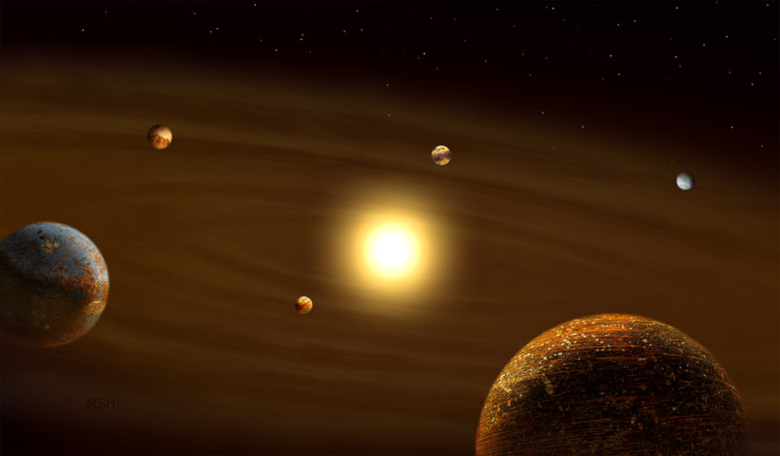Using an instrument called SOPHIE installed at the Haute-Provence Observatory in the South of France, astronomers have discovered a six planet system containing a "super-Earth" and five "mini-Neptunes,” all with exceptionally regular spacing; a feature which hints at how the system may have formed.
Approximately 27 parsecs away (88 light years) in the constellation Draco lies HD 158259, a star around 1.1 times more massive than our Sun.
For the past seven years HD 158259 has been observed by astronomers using a spectrograph called SOPHIE; a spectrograph is an instrument used to measure properties of light over a specific portion of the electromagnetic spectrum and it has been used to search for Neptunes and super-Earths in the Northern Hemisphere since 2011.
Although SOPHIE might be relatively new, the observatory it is housed at – the Haute-Provence Observatory – was where the first exoplanet around a main-sequence star was discovered (51 Pegasi b).
Since then thousands of exoplanets, from small rocky worlds to huge gas giants have been found using many different telescopes, hundred of which are in multi-planetary systems, however only a dozen contain six planets or more due in part to the difficulty of finding systems such as these.
To discover the planets of HD 158259, astronomers took 209 radial velocity measurements using SOPHIE – a method which measures the change in light that occurs when the gravitational pull of a planet causes the parent star to “wobble” around – to confirm their existence.
"The discovery of this exceptional system has been made possible thanks to the acquisition of a great number of measurements, as well as a dramatic improvement of the instrument and of our signal processing techniques," says François Bouchy, professor in the Department of Astronomy of the Faculty of science of UNIGE and coordinator of the observational program that helped discover the six-planet system.
Their results were also backed up with TESS (Transiting Exoplanet Survey Satellite) data, which also helped reveal that the density of the innermost planet resembles that of terrestrial-type world.
Exceptional as the system is, the astronomers behind the discovery are just as excited as the type of orbits they have formed.
HD 158259 and its six planets b, c, d, e, f and g, are in a compact system. So compact that the distance of the outermost planet to its star is 2.6 times smaller than the distance between Mercury and the Sun.
Furthermore say the team, headed by Nathan C. Hara, a researcher at the Department of astronomy of the Faculty of science of UNIGE, the system is in a near-3:2 mean motion resonance chain.
This means that as the first planet—the one closest to the star—completes three orbits, the second one completes about two. As this second planet completes three orbits, the third completes about two, and so on.
Why is this important? Because it gives scientists an idea how the system could have formed.
As the planets are close to a 3:2 resonance, but not exactly within, it suggests that they used to be trapped in resonance in the past, then they migrated synchronously (in towards their host star), before the resonance was altered.
"Several compact systems with several planets in, or close to resonances are known, such as TRAPPIST-1. Such systems are believed to form far from the star before migrating towards it. In this scenario, the resonances play a crucial part," says Professor Stephane Udry, also at UNIGE.
Using tidal effect models, coupled with the knowledge that the planets are just outside a 3:2 resonance, should enable the team to constrain the internal structure of the planets in a future study, says Hara.
But there could be even more to HD 158259 than meets the eye. In their research paper, published in the journal Astronomy & Astrophysics, Hara and colleagues say that there are hints that other planets might also be lurking in the system, with 366, 660 and 1920 day orbital periods.
However, “the origin of the 366, 640, and 1920 day signals are uncertain, and we do not claim planet detections at those periods,” write Hara and colleagues in their research paper. There is also a very tentative detection at 34.5 days, but its signal is too low to be conclusive say the team.
If two of these planets are later confirmed to exist, HD 158259 would turn out to have the same amount of planets as our Solar System. The would make it the only other known system to contain eight planets. If all three are found to exist, HD 158259 would then be even more of an enigma.











